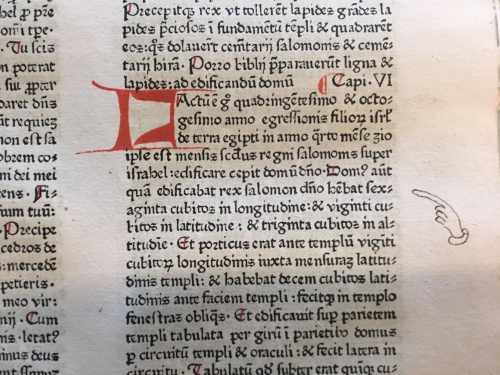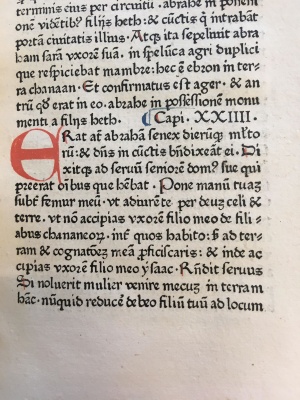Page Numbers: Difference between revisions
No edit summary |
|||
| Line 21: | Line 21: | ||
==Sources== | ==Sources== | ||
<references /> | <references /> | ||
<ref> Lyons, Martyn. Books: A Living History. Los Angeles: The J. Paul Getty Museum, 2011. </ref> | |||
Revision as of 19:44, 26 November 2018
Page numbers are wild
History
Scrolls
Scroll culture lacked pagination because a scroll’s “text was continuous and lacked page breaks” (Lyons 35) [1]. Though Egyptians, Greeks, and Romans of antiquity divided scrolls’ text and images into columns called paginae, the emergence of the codex—a collection of leaves bound on one side—after the first century AD introduced a new organizational mode through pages (Mak 4).
Codex
Although the materiality of pages in a codex changed how readers approach a text, it still took a long time to shift reading culture and necessitate the use of pagination.
This is partly because page numbering was not necessary to produce a codex. Bookbinders did not assemble books by each page but instead dealt with groups of several leaves at once. To arrange these sections in the right order, binders marked each section with a letter of the alphabet, usually in the bottom right corner of the recto sheet. Numbers followed the letters to indicate the sequence of the leaves.




Sources
- ↑ Author, Book, pg. #.
- ↑ Lyons, Martyn. Books: A Living History. Los Angeles: The J. Paul Getty Museum, 2011.